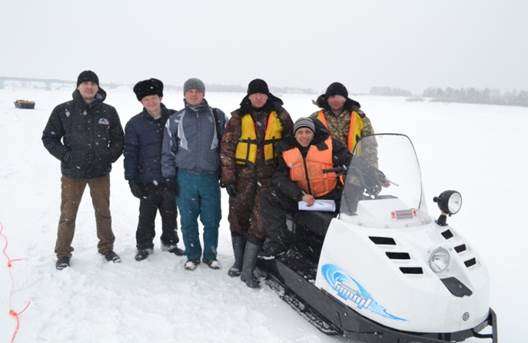Russian scientists blow up ice to test their theories

Supposing that a week ago, the air temperature was about zero, what is the best, safest method to blow up ice on rivers? What is the best way to plant explosives in conditions of low temperature when spring ice will not melt? The mechanics of Tomsk State University (TSU) have left their warm laboratories to test their methods in practice.
Tomsk State University is located in Siberia, where winter comes in November and often continues through March. Rivers have a lot of ice. But scientists involved in researching the dynamic loading of ice confront a situation with inconsistencies. The Mobile Laboratory for Research of Behavior of Natural Materials under Explosive Loading was established specifically to analyze the behavior of different types of ice after blasting.
"With the blast on ice, I feel an adrenaline rush," says Maksim Orlov, Ph.D., a member of the research team. "Especially exciting is the moment when you move to a crater from the blast—it is a moment of truth that shows the relevance of your theoretical model."
Nowadays, scientists have described 15 types of ice, but its structure is so complex that forecasting its behavior under dynamic loading is difficult. The University's scientists have investigated different types of ice, including river ice, for 25 years. Physical and mathematical models of ice behavior under dynamic loads are currently under development, as well as a numerical method for calculating its impact and explosive loading, which is capable of reproducing the main features and mechanisms of deformation and fracture.
"Snow-covered and snow-free ice cover of sandwich structure have already been the objects of our research. We have worked with natural limestone as well, and will soon begin an experimental study of bituminous coal and sparry limestone," says Maxim Orlov. "Our goal is to study the morphology of destruction and find patterns in this process."
The main difficulty of ice studies was identified in the previous century by Malmgren, Kann, Maeno, Bogorodskiy and others. It lies in the fact that a natural material like ice under dynamic loading is difficult to explore due to its complex internal structure, features of its crystal lattice, anomalous plastic properties, multiple phase transitions in the process of deformation, influence of temperature, etc.
On expeditions, researchers collect unique scientific data, which is then used in construction of mathematical models. Among them are integral characteristics of the processes (the diameter and depth of explosive lanes, etc.). The results of this research are now presented in the article "Mobile laboratory explosive destruction of natural materials: Investigation of the behavior of ice and limestone under explosive loading."
More information: M Yu Orlov et al. Mobile laboratory explosive destruction of natural materials: Investigation of the behavior of ice and limestone under explosive loading, Journal of Physics: Conference Series (2015). DOI: 10.1088/1742-6596/653/1/012038
Provided by National Research Tomsk State University




















